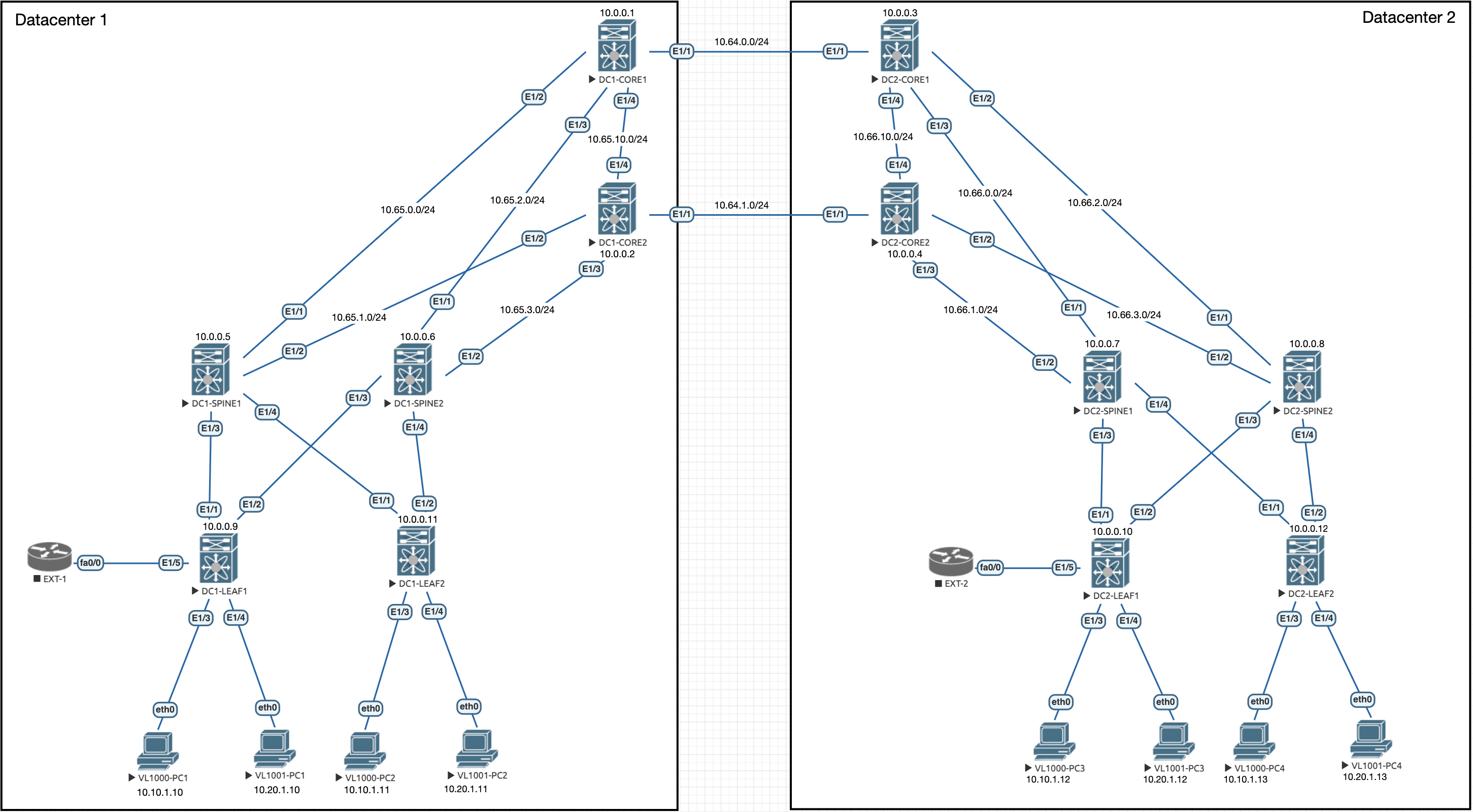In this part we are going to look at the anycast gateway setup of the topology. This will help get the servers off their local network.
Lets remind ourselves of the topology:

Anycast gateways will be configured on each of the leaves using a virtual mac address so that mobility can be achieved without having to re-arp for the gateway MAC address. The same IP and MAC will be configured on each leaf.
Anycast basically means that everything has the same IP address and the closest instance of that IP address will be used when its requested. This is how services like Cloudflare work so you are routed to the closest node into their network.
Virtual Anycast MAC address
This anycast mac address should be configured on each leaf:
fabric forwarding anycast-gateway-mac aaaa.bbbb.ccccWe will see this Mac address in the ARP table of the clients as the Gateway.
VRF Configuration
We need a tenant VRF to hold the routes in to keep them away from the underlay network in the global routing table. This needs to be created on the Core and Leaf switches only:
vrf context overlay-900101
vni 900101
rd auto
address-family ipv4 unicast
route-target both auto
route-target both auto evpnSVI Configuration
Now, we can configure the SVI interfaces with the anycast IP addresses. In this topology we have vlan 1000 and 1001. They need to be members of the VRF too. This configuration is for all leaves:
interface Vlan1000
no shutdown
vrf member overlay-900101
ip address 10.10.1.254/24
fabric forwarding mode anycast-gateway
interface Vlan1001
no shutdown
vrf member overlay-900101
ip address 10.20.1.254/24
fabric forwarding mode anycast-gatewayVerification
Now, we can verify the configuration by trying to ping the local anycast gateway from a server:
VPCS> ping 10.10.1.254
84 bytes from 10.10.1.254 icmp_seq=1 ttl=255 time=2.421 ms
84 bytes from 10.10.1.254 icmp_seq=2 ttl=255 time=1.491 ms
84 bytes from 10.10.1.254 icmp_seq=3 ttl=255 time=2.066 ms
84 bytes from 10.10.1.254 icmp_seq=4 ttl=255 time=1.755 ms
84 bytes from 10.10.1.254 icmp_seq=5 ttl=255 time=1.948 ms
VPCS> arp
aa:aa:bb:bb:cc:cc 10.10.1.254 expires in 70 secondsWe can see the pings are successful and also we can see the virtual mac address of the gateway too from the local arp table.
In the next part, we will move onto the L3VNI section. Just having anycast gateways doest't give us layer 3 connectivity between vlan 1000 and vlan 1001, we need some other things layered on top.

0 Comments